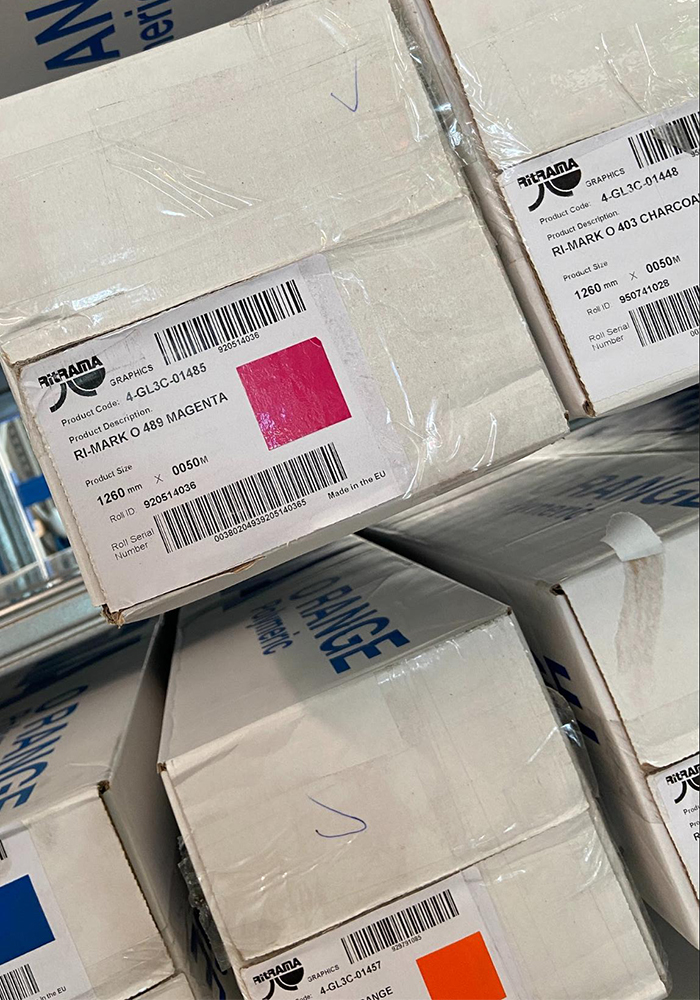How our control software improves the workflow and simplifies machine operation …
In the most recent episode of our software series we described how to compile an order list, e.g. by scanning barcodes on the delivery note or via automatic import of order data. Now we can proceed to their processing.
Multi-level commissioning
The material from the first position in the list is fetched from the warehouse and the machine operator scans the label on this master roll. ConvertPlus2 uses a green marking to indicate whether there are several jobs in the queue for this material and summarizes these jobs – regardless of where they were originally in the list. Therefore, the orders can be processed directly one after the other, thus avoiding the need to return a roll back into the warehouse, which would need to be fetched again shortly after for the second roll. This is the advantage of multi-stage commissioning, i.e. not processing one delivery note after the other, but rather scanning or importing several delivery notes in parallel and processing the order queue in an optimized manner.
Batch numbers

ConvertPlus 2 allows for manually entering a batch number for each roll as well as by scanning. Typically this is found on the manufacturer’s boxes. The mask for entering the batch number can also pop up automatically so that the user cannot process films at all without first entering the batch. The batch is included in the QR codes found on all customer labels and all warehouse labels that are printed for that particular roll or, depending on the layout, also printed in plain text. This means that the batch is always traceable and, in the event of a complaint, the customer can be asked which batch the roll came from.
Further features for easy operation
Additional elements featured in the software interface further simplify machine operation.
- One window allows you to easily select one of the four winding directions, which can be used on the machine (forward to forward, forward to backward etc.).
- If necessary, the light barrier in the rewinder’s cross-cutting head can be deactivated. The light barrier is used to detect the front edge of the film upon its insertion. In the case of transparent material, the machine automatically detects that there is no light barrier signal and uses a measuring wheel. In case of media that is not completely transparent or opaque, i.e. perforated film or printed transparent film, the logic of the machine is overwhelmed and the user has to deactivate the light barrier manually.
- Another button is provided in case a medium cannot be drawn into the machine using the standard process, e.g. as is the case with very thin media such as window films. In this case, the operator switches to manual operation. The user can then open the cross-cutting head and pull the film up to the gluing position on the cardboard tube by hand.





